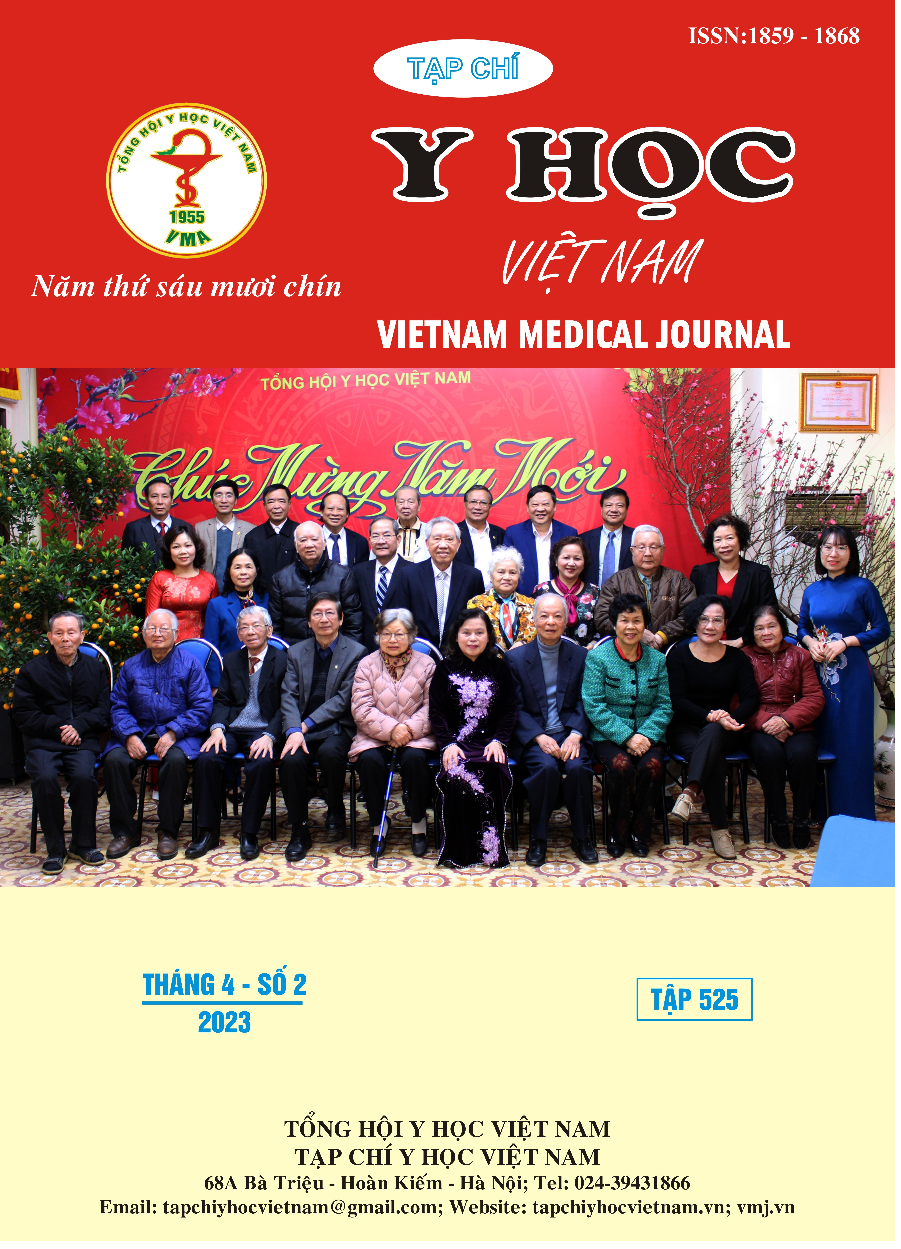CLINICAL, PARACLINICAL AND MICROBIOLOGICAL CAUSE URINARY TRACT INFECTIONS AT NOI II DEPARTMENT - SAINT PAUL HOSPITAL
Main Article Content
Abstract
Background: The aim of this study was to describe clinical, paraclinical, microbiological causes urinary tract infections and antibiotic sensitivity of them. Patients and methods: Retrospective, descriptive study on patients diagnosed with urinary tract infections inpatient treatment at Noi II Department - Saint Paul Hospital. Results: The study was included 120 patients, the male propotion was 34,4% (n=41) and the female was 65,6% (n=79). The average age of patients was 61,7 ± 18,3 from 19 to 93 years old. Common clinical symptoms: fever 67.5%, dysuria 70.0%, urgency 59.2%, suprapubic pain 35.8%, costovertebral angle pain 25%. The rate of positive urine culture was 40.8%, of which bacteria accounted for 97.7% (Gram (+) 13.6%, Gram (-) 86.4%). E.coli accounts for 80% of Gram (-) pathogens, 64.3% has the ability to produce ESBL. E.coli has high sensitivity to Carbapenem, Amikacin, Fosfomicin and Piperacilin/Tazobactam. Resistance to Quinolone from 53.6 to 60.7%, Cotrimoxazol 66.7%, Gentamycin 39.3%, Tobramycin 42.8%. E.coli ESBL (+) is very resistant to Cephalosporin group, especially Cefuroxime, Ceftriaxon and Cefotaxime (100%), while ESBL (-) has very low resistance to Cephalosporin. Conclusions: E.coli leads the cause of urinary tract infections with a high rate of antibiotic resistance, especially in strains capable of producing ESBL.
Article Details
Keywords
E.coli, Urinary tract infections, ESBL
References
2. Foxman B. Urinary tract infection syndromes: occurrence, recurrence, bacteriology, risk factors, and disease burden. Infect Dis Clin North Am.2013; 28(1), 1–13.
3. Ronald A. The etiology of urinary tract infection: traditional and emerging pathogens. Dis--Mon DM. 2003; 49(2), 71–82.
4. Đoàn Văn Thoại. Nghiên cứu tinh trạng nhiễm khuẩn tiết niệu và sự nhạy cảm của vi khuẩn gây bệnh với kháng sinh ở bệnh nhân nằm điều trị nội trú tại khoa Thận - tiết niệu bệnh viện Bạch Mai, Luận văn tốt nghiệp Bác sỹ y khoa, Trường Đại học Y Hà Nội. 2010.
5. Vũ Thị Thanh Hà. Đánh giá tình trạng nhiễm khuẩn tiết niệu bệnh viện ở bệnh nhân hồi sức cấp cứu có đặt ống thông bàng quang, Luận văn tốt nghiệp cử nhân điều dưỡng, Trường Đại học Y Hà Nội. 2004.
6. Đặng Quỳnh Trang. Nhận xét đặc điểm lâm sàng, cận lâm sàng và tình trạng kháng kháng sinh của một số vi khuẩn gây nhiễm khuẩn tiết niệu ở trẻ em, Luận văn Thạc sỹ y học, Trường Đại học Y Hà Nội. 2017.
7. Morrissey I., Hackel M., Badal R. el al. A Review of Ten Years of the Study for Monitoring Antimicrobial Resistance Trends (SMART) from 2009 to 2011. Pharm Basel Switz. 2013; 6(11), 1335–1346.
8. Bộ y tế và GRAP - VN. Báo cáo sử dụng kháng sinh và kháng kháng sinh tại 15 bệnh viện tại Việt Nam năm 2008 – 2009. 2009.


